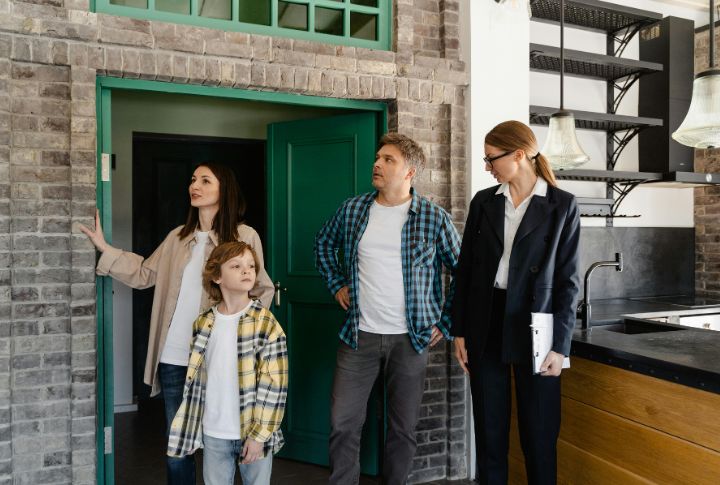
For decades, the middle class has represented stability. But today, that sense of security is beginning to slip away. With rising costs across nearly every essential category, the next ten years may require not just budgeting, but letting go of once-standard expectations.
And if there’s one area where this shift is already showing, it’s in the American dream of homeownership.
Homeownership And Renovations On Pause
The median U.S. home price soared to $441,738 in 2025, while monthly mortgage payments surpassed $2,500, according to Harvard JCHS. For many would-be buyers, that number is simply out of reach.
Those who already own are feeling the strain. Renovations like roof repairs or kitchen remodels are being delayed, not because of a lack of interest, but because the math no longer works.
But it’s not just the big, interior structural projects that are on hold.
Backyard Upgrades Take A Backseat
Dreams of expanding outdoor living spaces are now being quietly shelved. Patios, decks, garden sheds, and bonus rooms used to be a mark of progress. Today, however, higher material and labor costs have made even modest backyard upgrades financially daunting. Homeowners with equity may find themselves sitting on value they can’t tap.
And while houses are staying the same, families are also rethinking what they keep in the driveway.
Fewer Cars, Longer Lifespans
Owning two or more vehicles used to be typical for many middle-class families—practical even. But with the average new car now priced at $48,699 and insurance premiums topping $2,600 annually, that norm is slipping.
Increasingly, households are consolidating to one vehicle, or simply keeping older cars running for longer. Some families are solely relying on public transit. Just like with transportation, the cost of living shift is changing how—and what—we eat.
Grocery Habits Are Under Pressure
The weekly food bill has become a source of stress for many. Groceries now average more than $230 per week, up 23% from pre-2020 levels. Where families once filled carts with fresh produce and name-brand staples, they’re now opting for frozen veggies, generic labels, and bulk deals.
It’s all about making ends meet. And that same sense of reprioritization is also extending into something more personal: our health.
Routine Healthcare? Not So Routine Anymore
As more of the household budget gets absorbed by essentials like housing and food, preventive healthcare is falling by the wayside. Rising deductibles and out-of-pocket expenses are forcing tough choices.
Many families are delaying dental cleanings or skipping annual physicals. What used to be routine is now becoming rare.
Pets Becoming Less Affordable
Financial strain is affecting more than just human needs; it’s reshaping how families care for their animals, too. Annual expenses for a pet, including veterinary care and supplies, can easily exceed $1,500.
For some, bringing home a new pet simply isn’t feasible anymore. Others are making compromises, such as postponing checkups or switching to lower-cost food options to keep costs manageable.
Family Planning Delayed
These tough choices are not limited to pets. Many families are rethinking whether they can afford to grow at all. The cost of raising a child through age 17 is now over $310,000, excluding college.
That kind of long-term financial commitment is causing some couples to delay having children or to reconsider how many they can realistically support.
Fewer Activities For Kids
Even for families with children, the financial cutbacks continue. Enrichment opportunities, like music classes, school sports, and summer programs, now come with rising fees that often exceed $1,000 per activity.
As household budgets tighten, these non-essentials are being trimmed first, leaving many kids with fewer chances to explore their interests outside the classroom.
Delaying Tech Upgrades
Where annual phone or laptop upgrades were once a routine part of middle-class life, many families are now pushing those purchases further down the road. Devices are being repaired instead of replaced, and households are waiting until a product fails before even considering a new one.
Things like smart home devices and tablets move from “nice to have” to “can wait.” This more cautious approach to tech spending ties directly into a broader change in how leisure time is valued and funded.
Leisure And Hobby Spending Slips
The idea of investing in personal hobbies or home-based fun is becoming harder to justify when essentials are under pressure. Discretionary purchases like camping equipment, home gym gear, or art supplies are being reconsidered or postponed entirely.
Even long-loved activities such as biking, fishing, or camping are being scaled back. This quiet downsizing of leisure mirrors the broader trend of middle-class restraint, where comfort and enjoyment are increasingly measured against necessity.
The middle class is now learning to redefine stability, not by what they gain, but by what they learn to live without.
